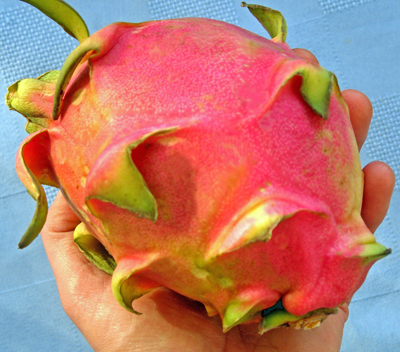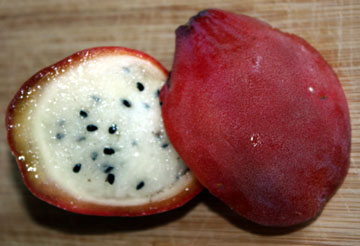Yet another Cacti Super Fruit! Who knew there were so many! Today Brigitte introduced me to the pitahaya or dragon fruit. This is the fruit of the cactus genus Hylocereus. It gets its name Dragon fruit because the skin of the fruit resembles the scales of a mythical dragon.
So what's so good about it?
High in antioxidiants which help rid the body of free radicals and cancer-producing properties. Dragon fruit ranks high up on the antioxidant list with popular fruits like Acai berries.
Dragon Fruit is high in fiber which can help stabilize blood sugar. Fiber helps with suppressing sugar spikes and can help regulate diabetes.
Its low in calories and thanks to all that fiber you'll feel full longer after eating one of these. As opposed to eating a pack of chips which is very low in fiber and you'll be hungry in ten minutes
Antioxidants can help keep your skin tighter and looking younger. this means Dragon Fruit can actually slow down the aging of your skin cells.
It also works to improve the immune system thanks to being packed full with vitamins and minerals. some of these include:
- Vitamin C, B1, B2 and B3
- Calcium
- Phosphorous
- Iron
- Protein
- Niacin
- Fiber
So the next time you're in the grocery or your favorite fruit stall, keep your eyes peeled for these amazing fruits. Try one, I'm sure you won't regret it!
.jpg)




.jpg)






.jpg)



.jpg)





.jpg)






















